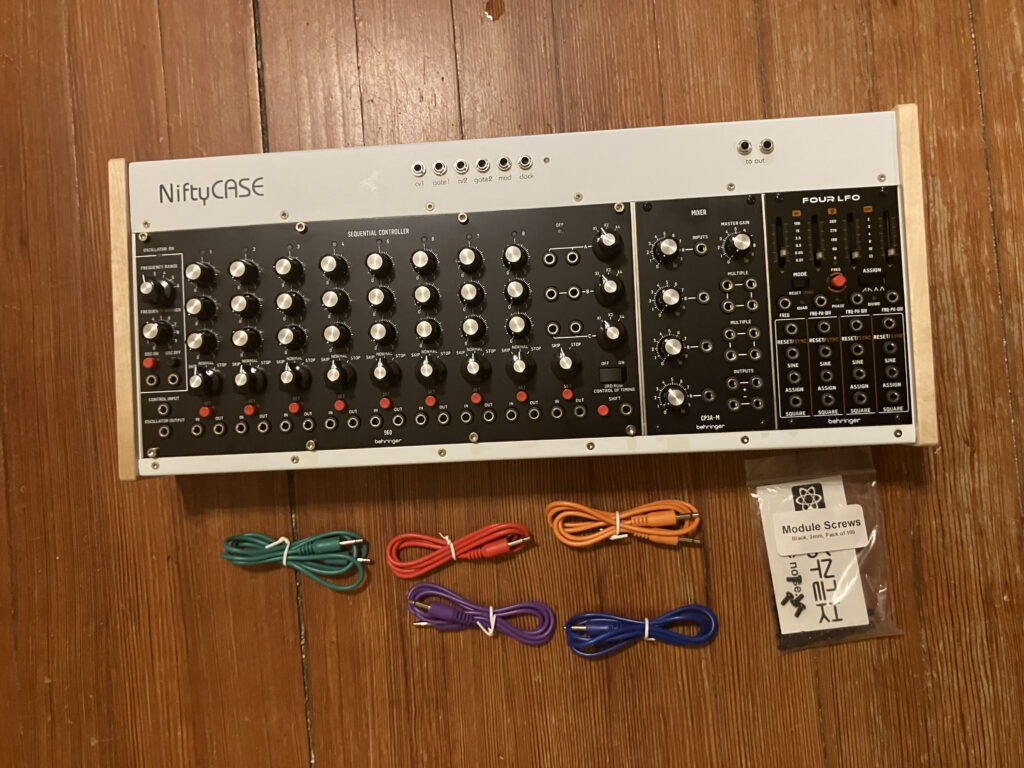Wow. It’s been a long time. An embarrassingly long time. Some of my excuses are typical academic excuses: busy spring 2025 semester, conference presentation due date, and busy summer 2025 semester. However, a couple of them have been personal: my mother had a stroke and my elder cat has had a lot of health problems, and is likely in his last months.
Another thing holding up the process was the final funds. I received the final funds in June, and was able to purchase the remaining items. However, I altered the list a bit, as it seems the primary student use of the video synthesis setup will be students in VPM 248: Sound Synthesis. Accordingly, I purchased some Eurorack gear that will work in combination with the Sleepy Circuits Hypno, as well as some accessories.
In terms of the accessories, I bought a decent USB webcam with manual zoom and manual focus, a tripod, a USB HDMI capture card, a few of USB cables and two USB thumb drives. The camera is a MOKOSE HD webcam with a 5-50mm zoom lens. The lens is a CS-mount lens that can be removed and replaced with other CS-mount lenses.

The Eurorack setup is perhaps of greater interest. In the previous entry, I went into detail how Eurorack modules can be used to control the settings of the Sleepy Circuits: Hypno. The setup includes a Behringer 960 sequential controller, a Behringer CP3A-M mixer, and a Behringer Four LFO enclosed in a Cre8audio NiftyCASE. In addition to these items I purchase a set of 5 patch cables, and some rack screws.

The NiftyCASE provides power to the three modules, but also allows for MIDI input via 5-pin DIN, as well as USB. Any MIDI input is then converted to control voltages by the NiftyCASE. The Four LFO contains four low frequency oscillators each of which can output sine, square, sawtooth, ramp, triangle, or trapezoidal waves at frequencies that are suitable to for controlling other modules.
The other two modules (the 960 and the CP3A-M) are recreations of modules from the Moog 900 series of the late 1960s and early 1970s. The 960 Sequential Controller features three rows of eight knobs, each of these knobs is used to set a different frequency. These set frequencies are then played back, looping from the left to right. To the right of these knobs are control voltage outputs for each row. These voltages can then be used to control other modules (for instance the Hypno). In addition to having a speed control, the 960 allows each of the 8 steps to be in play, skip, or stop mode. In play mode, the step is played, and then moves onto the next step. In skip mode, that step is skipped. In stop mode, when that step is hit, it repeats until it is switch to either play or skip mode.
The CP3A-M is a mixer, but it has a few nice features. If you use only one input, you can use it as an attenuator, that is as a module that can decrease the amplitude of a signal. Likewise, since it has both positive and negative outputs, it can be used as a signal inverter. Finally, in addition to being a four channel mixer, it contains two sets of multiples. Multiples can be used to split a given signal into two or three duplicate copies of the same signal.
Starting in spring 2026, students enrolled in VPM 248: Sound Synthesis will be required to create a music video for their first project using the Hypno in conjunction with the above Eurorack setup. Examples will be presented in the music technology showcase. One additional benefit of this Eurorack setup is that it will also work in conjunction with several of the synthesizers resident in The Song Factory, the music program’s recording studio.
In addition to incorporating this gear into VPM 248 I still have more work outstanding for the Digital Innovation grant. I have to finish music videos for the first two tracks on my album Point Nemo. I also have to organize a concert of live music that will feature my student assistant performing video live using the Hypno in conjunction with the Eurorack setup. I hope to get the two videos done before the beginning of Fall 2025, and I imagine I may be able to schedule the concert for mid November 2025.
